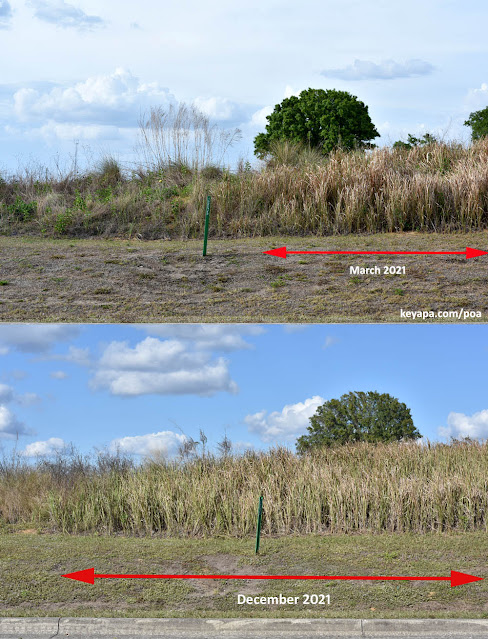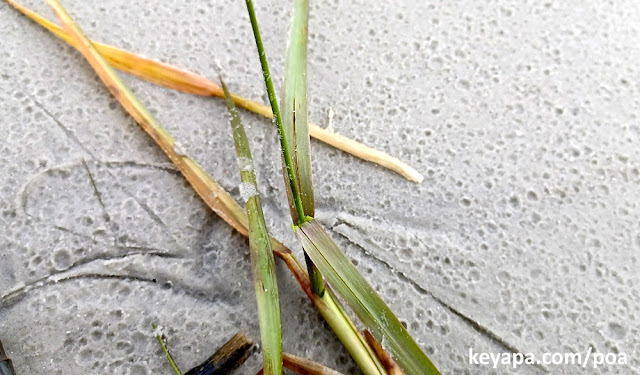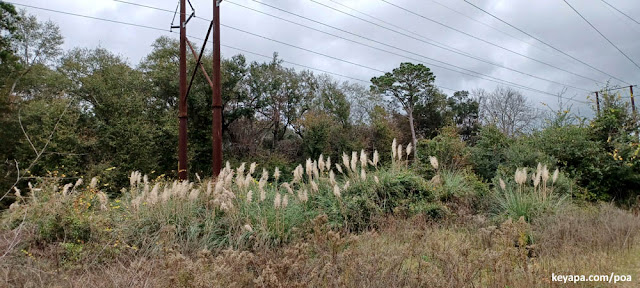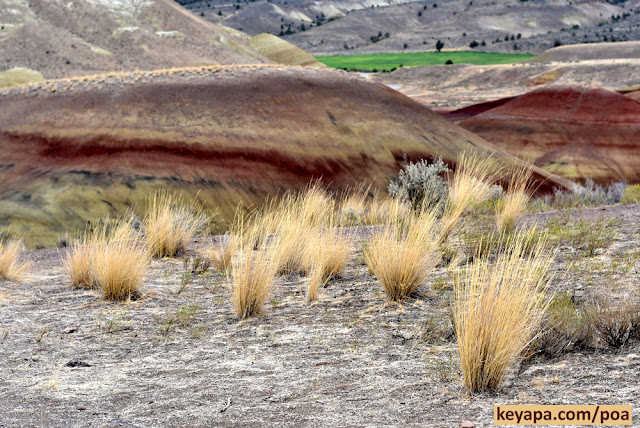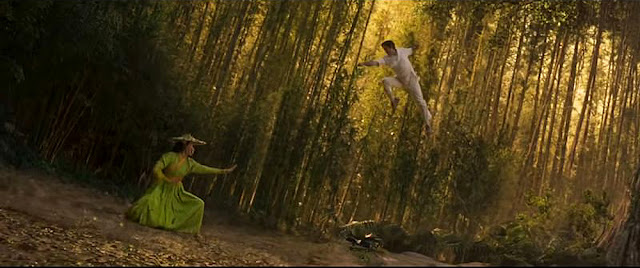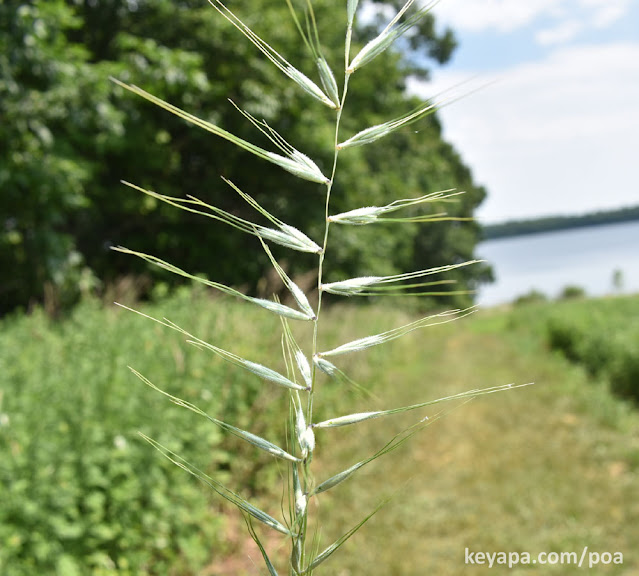Osage Plains Prairie in Missouri, by Pat Whalen. To learn more about the importance of protecting original prairie in Missouri, and how you can get involved, please visit www.moprairie.org
The ability to sequester and store carbon in a manner that will reliably prevent it from pouring back into the atmosphere is essential in our fight to slow global warming and climate change.
Intact and ancient old growth grasslands are our best weapon in this fight in many parts of the world, due to several factors that allow it to more safely store carbon underground compared to forests and degraded secondary grasslands.
What are some factors in our changing climate that affect the reliability of carbon sequestration and storage?
There are two main factors that are increasingly being affected by climate change, and they are wildfires and drought.
- Climate change is increasing the frequency and/or severity of fire weather – which is defined as periods with a high fire risk due to a combination of high temperatures, low humidity, low rainfall and often high winds.
This trend has been confirmed in many regions of the world, including Amazonia, southern Europe, Scandinavia, the Western USA and Canada, Siberia, and Australia. Paleo records have also confirmed the tendency of wildfires to occur during warmer periods of time (Jones et al, 2020; Smith et al, 2020).
- Climate change is increasing droughts and drought severity.
The percentage of geographic areas affected by drought events has increased by approximately 1.74% per decade from 1950 to 2008, and this trend is projected to strengthen under global climate change with more intense droughts. This will include significant decreases in terrestrial water storage (TWS) the sum of continental water stored in canopies, snow and ice, rivers, lakes, reservoirs, wetlands, soil, and groundwater, which is a critical component of the global water and energy budget (Gao et al, 2019; Shiru et al, 2020; Pokhrel et al, 2021).
What characteristics allow grasslands to sequester and store carbon more safely and reliably when compared to forests?
The increasing probability of drought and wildfires influences the ability of different ecosystems to reliably sequester and store carbon. Although primary forests are essential to our world and also need to be protected, misguided afforestation efforts that destroy ancient grasslands is on the rise, often with disastrous consequences (e.g. planting trees where they cannot survive, or even worse, creating invasive commercial monoculture plantations).
- Grasslands store enormous amounts of carbon in soil.
North American grasslands for example can store as much carbon in soil as tropical forests store as biomass. Since grasslands store most of this carbon biomass safely underground, they are less vulnerable to being released back into the atmosphere due to wildfires. In contrast, most tree biomass is above ground and vulnerable. Because of this, grasslands may be more reliable carbon sinks in a world with increasing probability of wildfires (Dass et al, 2018; Veldman et al, 2019; Qi et al, 2019).
- Grasslands are more resilient in the face of droughts compared to forests.
Tree mortality is increasing rapidly due to heat stress and drought in many regions of the world, whereas shorter plants like grasses and shrubs tend to be more resilient, and this can cause forest collapse back to shrubs and grasslands as droughts increase in many parts of the world. Aboveground net productivity (ANPP) in grasslands is also more resilient than forests during long term droughts (McDowell and Allen, 2015; Lloret and Batllori, 2021; Zhang et al, 2021 ).
Why are ancient Old Growth Grasslands better than secondary degraded grasslands in our fight against climate change?
Ancient old growth grasslands store more carbon, are more resistant to fire and are richer in species than secondary grasslands. Grassland degradation led to average losses of 48 and 39% for Soil Organic Carbon (SOC) and Soil Total Nitrogen (STN) stocks, respectively (Zaloumis & Bond, 2016; Jingjing et al, 2021)
Why do we need to emphasize the importance of ancient grasslands in our quest to mitigate climate change?
We need to continue to strongly advocate for the preservation of ancient old growth grasslands, not only because of their continued destruction at the hands of land developers, but also because of misguided afforestation efforts around the world. Many of these grasslands originated thousands and even millions of years ago, long before the rise of humanity. We owe it to the future to preserve them and the countless animals and plants that make it their home, and in the process help combat climate change.
 |
| Andropogon gerardii says "V for Victory!" |
References and Literature Cited
Chang, J., Ciais, P., Gasser, T. et al. Climate warming from managed grasslands cancels the cooling effect of carbon sinks in sparsely grazed and natural grasslands. Nat Commun 12, 118 (2021). https://doi.org/10.1038/s41467-020-20406-7
Dass Pawlok, Benjamin Z Houlton, Yingping Wang, David Warlind. Grasslands may be more reliable carbon sinks than forests in California. Environmental Research Letters, 2018; 13 (7): 074027 DOI: 10.1088/1748-9326/aacb39
Gao Jiangbo,Linlin Zhang,Ze Tang,Shaohong Wu (2019). A synthesis of ecosystem aboveground productivity and its process variables under simulated drought stress. Journal of EcologyVolume 107, Issue 6 p. 2519-2531
Jackson, R., Banner, J., Jobbágy, E. et al. Ecosystem carbon loss with woody plant invasion of grasslands. Nature 418, 623–626 (2002). https://doi.org/10.1038/nature00910
Jingjing Yang, Xuefeng Wu, Ying Chen, Zhanbo Yang, Jushan Liu, Donghui Wu, Deli Wang, Combined attributes of soil nematode communities as indicators of grassland degradation, Ecological Indicators, 10.1016/j.ecolind.2021.108215, 131, (108215), (2021).
Jones, Matthew W., Adam Smith, Richard Betts, Josep G. Canadell, I. Colin Prentice, and Corinne Le Quéré. Climate Change Increases the Risk of Wildfires (2020). ScienceBrief, January 2020.
Lloret F., Batllori E. (2021) Climate-Induced Global Forest Shifts due to Heatwave-Drought. In: Canadell J.G., Jackson R.B. (eds) Ecosystem Collapse and Climate Change. Ecological Studies (Analysis and Synthesis), vol 241. Springer, Cham. https://doi.org/10.1007/978-3-030-71330-0_7
McDowell N G and Allen C D 2015 Darcy’s law predicts widespread forest mortality under climate warming Nat. Clim. Change 5 669–72
Pokhrel, Y., Felfelani, F., Satoh, Y. et al. Global terrestrial water storage and drought severity under climate change. Nat. Clim. Chang. 11, 226–233 (2021). https://doi.org/10.1038/s41558-020-00972-w
Shiru, M.S., Shahid, S., Dewan, A. et al. Projection of meteorological droughts in Nigeria during growing seasons under climate change scenarios. Sci Rep 10, 10107 (2020). https://doi.org/10.1038/s41598-020-67146-8
Smith, Adam J. P. , Matthew W. Jones, John T. Abatzoglou, Josep G. Canadell, Richard A. Betts (2020). Climate Change Increases the Risk of Wildfires. ScienceBrief, September 2020 Update.
Yulin Qi, Wei Wei, Cungen Chen, Liding Chen (2019). Plant root-shoot biomass allocation over diverse biomes: A global synthesis, Global Ecology and Conservation, Volume 18, e00606,ISSN 2351-9894,https://doi.org/10.1016/j.gecco.2019.e00606.
Veldman, Joseph & Aleman, Julie & Alvarado, Swanni & Anderson, Todd & Archibald, Sally & Bond, William & Boutton, Thomas & Buchmann, Nina & Buisson, Elise & Canadell, Josep & Dechoum, Michele & Díaz-Toribio, Milton & Durigan, Giselda & Ewel, John & Fernandes, G. & Fidelis, Alessandra & Fleischman, Forrest & Good, Stephen & Griffith, Daniel & Zaloumis, Nicholas. (2019). Comment on “The global tree restoration potential”. Science. 366. eaay7976. 10.1126/science.aay7976.
Susan E. Ward,Simon M. Smart,Helen Quirk,Jerry R. B. Tallowin,Simon R. Mortimer,Robert S. Shiel,Andrew Wilby,Richard D. Bardgett.Legacy effects of grassland management on soil carbon to depth. Global Change BiologyVolume 22, Issue 8 p. 2929-2938
Yizhou Zhuang, Rong Fu, Benjamin D. Santer, Robert E. Dickinson, Alex Hall. Quantifying contributions of natural variability and anthropogenic forcings on increased fire weather risk over the western United States. Proceedings of the National Academy of Sciences, 2021; 118 (45): e2111875118 DOI: 10.1073/pnas.2111875118
Zaloumis, N.P. & Bond, W.J. (2016). Reforestation or conservation? The attributes of old growth grasslands in South Africa. Philosophical Transitions of the Royal Society B, vol. 371, 20150310. https://doi.org/10.1098/rstb.2015.0310
Zhang Linlin , Jiangbo Gao, Ze Tang, Kewei Jiao (2021) Quantifying the ecosystem vulnerability to drought based on data integration and processes coupling, Agricultural and Forest Meteorology Volumes 301–302, 108354, ISSN 0168-1923, https://doi.org/10.1016/j.agrformet.2021.108354.
